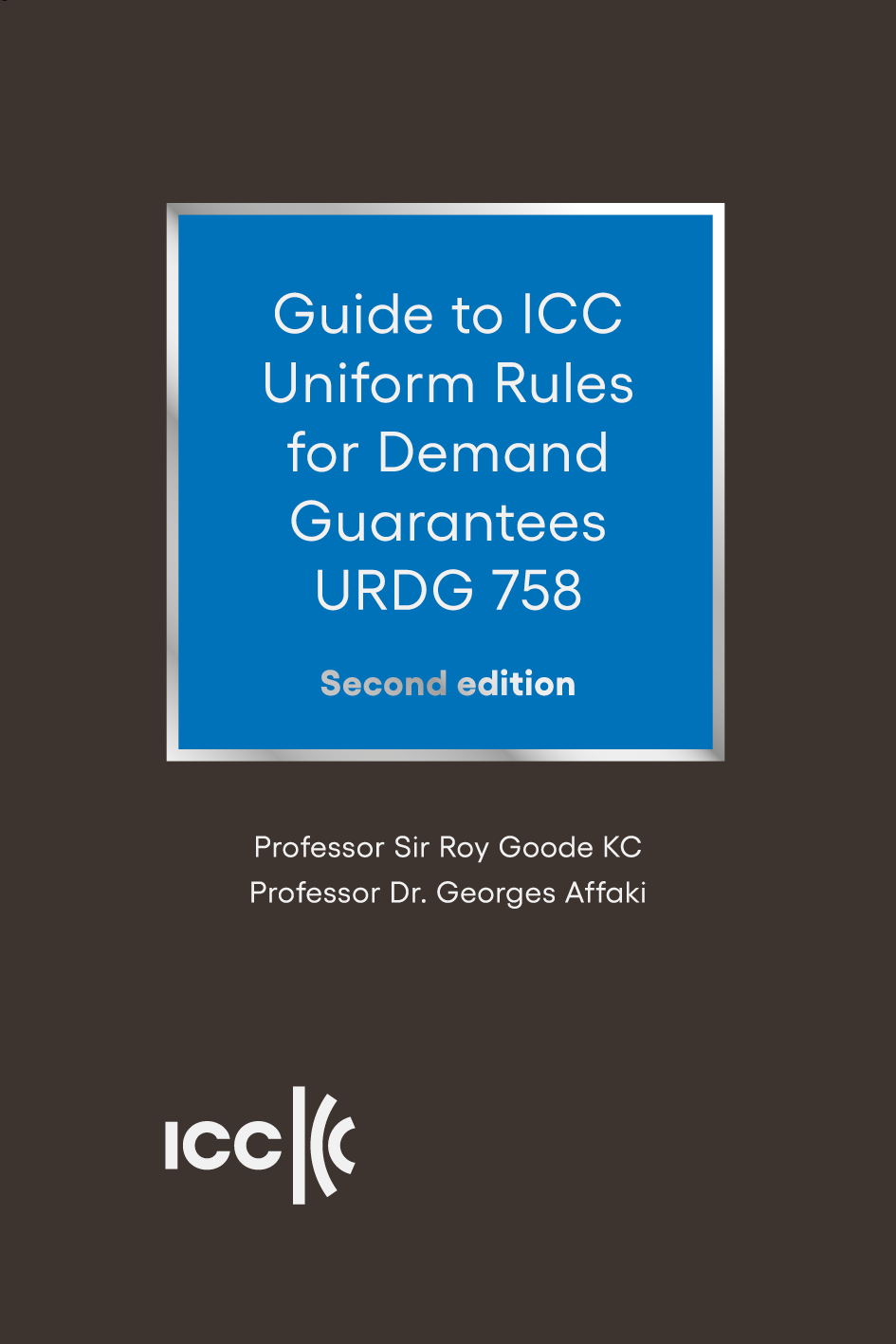- CHAPTER 1: Demand guarantees and counter-guarantees in a nutshell
1.1. What is a demand guarantee?
1.2. Types of guarantees
1.3. No proof of breach
1.4. Fraud
1.5. Documents
1.6. Non-documentary conditions
1.7. Independence of guarantee
1.8. Demand guarantees distinguished from suretyships
1.9. Demand guarantees distinguished from indemnities
1.10. Demand guarantees distinguished from documentary credits
1.11. Demand guarantees distinguished from standby letters of credit
1.12. Multi-party guarantees; syndicated guarantees
1.13. Two-party guarantees
1.14. Guarantees not issued in connection with an underlying contract
1.15. What is a counter-guarantee?
1.16. Structure of a counter-guarantee
1.17. Independence of a counter-guarantee
1.18. Is there a claim available to the beneficiary against the counter-guarantor?
1.19. Is there a claim available to the applicant against the guarantor, and reciprocally, in an indirect guarantee?
- PROLOGUE: The road to URDG 758
o Why the URDG?
o A brief history of the revision
o URDG 758 and URDG 458 compared
- CHAPTER 2: The URDG in a nutshell
2.1. What are the URDG?
2.2. Are there conditions for the URDG to apply to a guarantee?
2.3. How do the URDG apply?
2.4. The URDG and the law
2.5. Using the URDG 758: advantages to all parties
2.6. The scope of the URDG 758: what’s in – what’s out
2.7. Other questions on the scope of the URDG
- CHAPTER 3: The URDG 758 in operation
3.1. Drafting a URDG guarantee
3.2. Issuing a URDG guarantee
3.3. Changing the terms of a URDG guarantee
3.4. Making a presentation
3.5. Examining a presentation
3.6. Making payment
3.7. Termination of the guarantee
3.8. The relationship with the instructing party
- CHAPTER 4: A commentary on URDG 758
4.1. Article 1 Application of URDG
4.2. Article 2 Definitions
4.3. Article 3 Interpretation
4.4. Article 4 Issue and effectiveness
4.5. Article 5 Independence of guarantee and counter-guarantee
4.6. Article 6 Documents v. goods, services or performance
4.7. Article 7 Non-documentary conditions
4.8. Article 8 Content of instructions and guarantees
4.9. Article 9 Application not taken up
4.10. Article 10 Advising of guarantee or amendment
4.11. Article 11 Amendments
4.12. Article 12 Extent of guarantor’s liability under guarantee
4.13. Article 13 Variation of amount of guarantee
4.14. Article 14 Presentation
4.15. Article 15 Requirements for demand
4.16. Article 16 Information about demand
4.17. Article 17 Partial demand and multiple demands; amount of demands
4.18. Article 18 Separateness of each demand
4.19. Article 19 Examination
4.20. Article 20 Time for examination of demand; payment
4.21. Article 21 Currency of payment
4.22. Article 22 Transmission of copies of complying demand
4.23. Article 23 Extend or pay
4.24. Article 24 Non-complying demand, waiver and notice
4.25. Article 25 Reduction and termination
4.26. Article 26 Force majeure
4.27. Article 27 Disclaimer on effectiveness of documents
4.28. Article 28 Disclaimer on transmission and translation
4.29. Article 29 Disclaimer for acts of another party
4.30. Article 30 Limits on exemption from liability
4.31. Article 31 Indemnity for foreign laws and usages
4.32. Article 32 Liability for charges
4.33. Article 33 Transfer of guarantee and assignment of proceeds
4.34. Article 34 Governing law
4.35. Article 35 Jurisdiction
- CHAPTER 5: The URDG in the world
5.1. The URDG in various languages
5.2. The URDG and other ICC Rules
5.3. The URDG and the UN Convention
5.4. The URDG as a model for national laws
5.5. The URDG as a model for other organisations’ standard guarantee forms
5.6. The URDG in the courts
o Appendix 1 ICC Uniform Rules for Demand Guarantees (URDG 758) and Model Forms
o Appendix 2 The Business Case for the Revision of URDG
o Appendix 3 ICC Policy Statement on Originals
o Appendix 4 DOCDEX Rules




